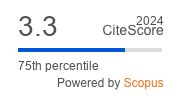Article | Open Access
Child Protection and the Municipal Budget: Interaction and Sensemaking Over a Welfare Dilemma
| Views: | 721 | | | Downloads: | 731 |
Abstract: This article provides ethnographic insights into how the welfare dilemma of balancing the moral imperative to meet needs with the financial responsibility of allocating limited resources is understood and handled in social work practice. Particular attention is paid to the everyday interaction of managers and social workers within the context of child protection. The analysis draws on interviews and participant observations conducted in child protection departments in Swedish municipalities as part of three research projects between 2014 and 2023. The results demonstrate that the dilemma is present in everyday negotiations, tensions, and power dynamics within the social services. On the one hand, the costs of child protection are constructed as a burden on the municipal budget through engagements in fundamental organisational structures, routines, and control mechanisms. The cue at the centre of this problem construction is “Don’t waste taxpayers’ money.” Conversely, budget constraints and budget control are framed as obstacles to providing quality child protection, based on the cue, “Don’t let children’s well‐being depend on money.” These are two values with strong societal support, neither of which participants want to be held responsible for neglecting. However, in public discourse, the unconditional worth of the child is given greater weight. This can sometimes lead to budget‐related activities being concealed behind more socially acceptable justifications.
Keywords: child protection; budget control; sensemaking; social work
Published:
© Teres Hjärpe. This is an open access article distributed under the terms of the Creative Commons Attribution 4.0 license (http://creativecommons.org/licenses/by/4.0), which permits any use, distribution, and reproduction of the work without further permission provided the original author(s) and source are credited.


